Hope Tucker: The Obituary Project
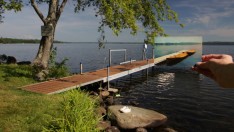
The Sea [is still] Around Us, by Hope Tucker
Los Angeles premiere!
At the Echo Park Film Center, 1200 N. Alvarado St., Los Angeles CA 90026
Hope Tucker in person!
Note the change in location!
Hope Tucker visits Los Angeles for her first show here of The Obituary Project, a compendium of experimental salvage ethnography. In this series of films, she transforms what we know as a daily form of terse, text-driven, populist narrative by reframing the passing of sites, people, communities, rituals, cultural markers, and ways of being.
She has documented shuttered bread factories, fallen witness trees, and disappearing civil rights era landmarks; animated cyanotypes of downwinders and old instructions for making fishing nets by hand; recorded mobile phone footage of the last public phone booths in Finland; written the entire text of a video out of paper clips, a Norwegian symbol of nonviolent resistance; and retraced the path of protest that closed the only nuclear power plant in Austria.
Like all obituaries, these are selective interpretations of rich and complex lives. The Obituary Project rearranges the contours of biography by acknowledging the attributes by which we learn to recognize and which become markers of authentic life.
Works from the project have screened in festivals, museums, and galleries including 21er Haus, Vienna; Ann Arbor Film Festival; Cairo Video Festival; European Media Art Festival, Osnabrück; Images Festival, Toronto; International Film Festival, Rotterdam; Museo Nazionale del Cinema, Torino; New York Film Festival; Punto de Vista, Pamplona; Vox Populi, Philadelphia; Wexner Center for the Arts, Ohio; Whitechapel Gallery, London; Zagreb Dox.
For more event information: www.lafilmforum.org, or 323-377-7238
Tickets: $10 general, $6 students/seniors; free for Filmforum members. Available by credit card in advance from Brown Paper Tickets at http://bpt.me/2512991 or at the door.
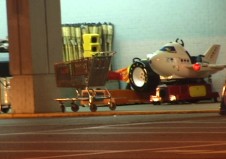
Missing in the Severe Clear
Missing in the Severe Clear
2001, US, video, 4 min.
'Severe clear' is aviation slang for the most ideal flying conditions: clear, crisp, blue skies with boundless visibility.
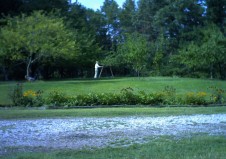
Vermont says goodbye to Solzhenitsyn
Vermont says goodbye to Solzhenitsyn
2012, US, HD, 4 min.
The exiled Russian writer lived in a remote American village from 1977 to 1994. This pixelation, part one of a diptych, was shot with a spycam on the anniversary of Solzhenitsyn's death. It is a bitter fate to live in exile and to think back on one’s own country. What is understandable and dear to those who live there seems strange for a person who is exiled, and he has a constant fear that what is gone is final.
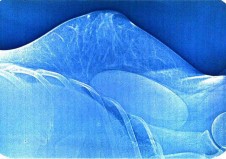
Lolo Ferrari
Lolo Ferrari
2001, US, video, 1.5 min.
An obituary whittles one’s social contribution down to its barest form.
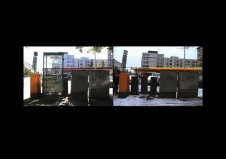
Puhelinkoppi (1882-2007)
Puhelinkoppi (1882-2007)
2010, FI/USA, mobile video, 7 min, 30 sec.
You'll need a phone of your own to make a phone call in Finland. A Nokia camera phone writes the obituary for the nation's last public phone booths.
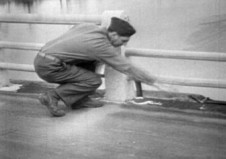
Noel
Noel
2005, UK, video, 5 min.
A songwriter's identity remains as obscure as his motives for penning a popular American holiday standard.
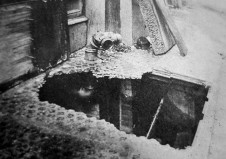
Bessie Cohen, Survivor of 1911 Shirtwaist Fire
Bessie Cohen, Survivor of 1911 Shirtwaist Fire
2001, US, video, 3 min.
The last ninety years of a rich and complex life become eclipsed by an escape from a burning building.
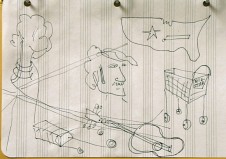
Big Star
Big Star
2003, US, video, 3 min.
The map-maker grew up down the street from where the car hit the tree and rode many a Big Star shopping cart.
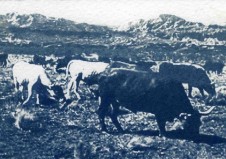
Handful of Dust
Handful of Dust
2013, US, HD, 9 min.
Light the fire and I'll show you something
Something invisible if you don't look to see it
Something which cannot be heard
if you don't care to listen to its breath
Light the fire and I'll show you fear in a Handful of Dust
Prussian blue can be used to render images and counteract radiation poisoning. This obituary is composed of sequences of hundreds of cyanotypes, exposed in the sand using paper sensitized with handmade emulsion and negatives from a 1954 American film shot in Cinemascope. Rates of cancer in the film’s cast and crew reflect that it was shot downwind during the period of above ground nuclear testing. Handful of Dust, produced in the Utah canyon where the 1954 film was shot, is designed as an antidote to recover the memory of the downwinders.
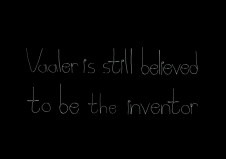
Vi holder sammen/ We hold together
Vi holder sammen/ We hold together
2011, NO/USA, HD, 2011
A typeface formed by hand from paper clips spells out an imperfect construction of a national history as it documents a period of nonviolent action. "Everyone always talks about the boys in the mountains fighting against the Nazis, but what interested me was the teachers, the clergy, and the labor movement. Those were the real resisters."
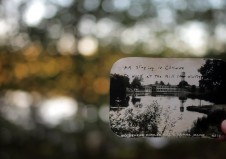
The Sea [is still] Around Us
The Sea [is still] Around Us
2012, US, HD, 4 min.
A postcard usually enhances the reality. The contrast is more stark in Corinna, Maine, a former woolen mill town on the shores of Lake Sebasticook, where years of dumping of industrial waste contaminated the water supply.
In 1964, E.B. White mourned his fellow Mainer Rachel Carson and the altered ecology of Sebasticook. Rachel Carson is dead, but the sea is still around us. This small lake is a sad reminder of what is taking place, in some degree, all over the land, from carelessness, shortsightedness, and arrogance. It is our pool of shame in this, 'our particular instant of time.'
Carson’s work mobilized the public and led to the formation of the US Environmental Protection Agency. Yet local people continued to seek regulation and revival of Sebasticook for twenty more years before the EPA began cleaning up Corinna.
